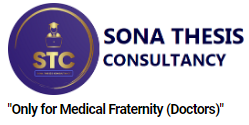
Menu
Assignment
Writing an assignment involves several key steps to ensure a well-structured, coherent, and well-researched document. Here is a general guide of STC for assignment writing:
- Understanding the Assignment:
- Carefully read the assignment prompt or guidelines to understand the requirements.
- Identify the key components, such as the topic, word limit, formatting, and any specific instructions.
- Research and Planning:
- Conduct thorough research on the topic, using reputable sources.
- Take notes and organize your ideas before starting the writing process.
- Develop a clear thesis statement or main argument that your assignment will revolve around.
- Structure:
- Follow a standard structure, including an introduction, body paragraphs, and a conclusion.
- The introduction should provide background information and state your thesis.
- Body paragraphs should each focus on a specific point or argument, supported by evidence.
- The conclusion should summarize key points and restate your thesis in a broader context.
- Introduction:
- Begin with a hook or an attention-grabbing statement to engage the reader.
- Provide background information on the topic.
- Clearly state your thesis or the main argument of your assignment.
- Body Paragraphs:
- Start each paragraph with a topic sentence that relates to the main thesis.
- Support your arguments with evidence, examples, or quotations.
- Ensure smooth transitions between paragraphs for a cohesive flow.
- Evidence and Analysis:
- Use credible sources to support your points.
- Analyze and interpret the evidence, demonstrating critical thinking.
- Relate evidence back to your main thesis.
- Conclusion:
- Summarize the main points without introducing new information.
- Restate the thesis in a broader context.
- Provide a sense of closure and leave a lasting impression on the reader.
- References and Citations:
- Properly cite all sources using the required citation style (APA, MLA, Chicago, etc.).
- Create a bibliography or reference page with a list of all sources used.
- Editing and Proofreading:
• Review your assignment for clarity, coherence, and grammar.
• Check for consistency in formatting and citation style.
• Proofread for spelling and typographical errors.
- Submission:
- Ensure that your assignment meets any specific formatting or submission guidelines.
- Submit your assignment on time, keeping track of any additional requirements.
STC check the specific guidelines provided by your instructor or institution. STC tailor your approach based on the assignment type, whether it’s an essay, report, research paper, or other forms of written work.